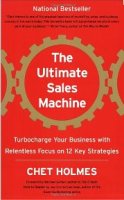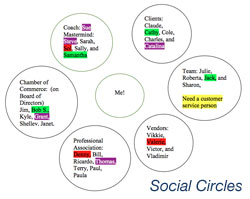 With holidays approaching, this is the perfect time of year to take a moment and reflect on all of the things we are grateful for. Being grateful may sound a bit trite, but it’s also the number one, hands down, fastest way to bring more positivity and less negativity into your work and life.
With holidays approaching, this is the perfect time of year to take a moment and reflect on all of the things we are grateful for. Being grateful may sound a bit trite, but it’s also the number one, hands down, fastest way to bring more positivity and less negativity into your work and life.
Acts of gratitude are selfless and done unconditionally. You can use gratitude as a private exercise of reflection or you can express your gratefulness to show people that they are appreciated.
You don’t have to wait to feel gratitude; you can invoke it proactively.
If you don’t have a gratitude practice, consider starting one. Science has gotten involved in studying gratitude, especially in the field of positive psychology, and the benefits to health and well-being are enormous. It can benefit your business, too, when you show appreciation for business partners, employees, customers, and vendors.
Here are five easy ways to bring more gratitude into your work and life:
- Think of five clients you can send thank you notes to. You can write them by hand or send a greeting card with a thank you message.
- On your customer service email templates, add a line before the closing that says, “We appreciate your business.” It does make a difference.
- Quick, right now, think of five things you are grateful for and list them off the top of your head. After you’re done, you should feel a little bit happier than you did a few minutes ago. Use this tool after you feel a negative emotion to move you back into positivity faster.

- Find part of your day that you don’t love, such as your commute to work. Change it to your gratitude commute, finding things along the way to be grateful for. You might be surprised how great you feel when you arrive at work.
- Let one of your employees know that you’re grateful for the work they do for you. You can do this verbally, with a note, or with a gift.
When you practice gratitude, you can’t help but feel happy for the things you have in your life. Try these five things on a regular basis to bring more gratitude and positivity into your work and life.
 How well do you love the way you spend your typical workday? What would a typical workday look like if you had absolutely no constraints? Here’s a fun exercise to get you thinking about your future and how you can make small changes in your current day to move it toward your ideal day.
How well do you love the way you spend your typical workday? What would a typical workday look like if you had absolutely no constraints? Here’s a fun exercise to get you thinking about your future and how you can make small changes in your current day to move it toward your ideal day. Happy new year! January is the month of new beginnings and a perfect time to strategize about projects that will boost your business prosperity. Here are five ideas to get you thinking about new beginnings for your business in 2018.
Happy new year! January is the month of new beginnings and a perfect time to strategize about projects that will boost your business prosperity. Here are five ideas to get you thinking about new beginnings for your business in 2018. The passing of Chet Holmes this week saddened me greatly. I am an ardent fan of this author of the bestseller The Ultimate Sales Machine, which I have read or listened to dozens of times. Intensely disciplined and fiercely competitive, Chet reengineered the sales process into a finely tuned piece of machinery resulting in his extraordinary success. He has inspired thousands of people seeking business acuity and excellence. I can only speculate at the hundreds whose lives have been profoundly influenced by this brilliant man. I know mine has been. May he rest in peace.
The passing of Chet Holmes this week saddened me greatly. I am an ardent fan of this author of the bestseller The Ultimate Sales Machine, which I have read or listened to dozens of times. Intensely disciplined and fiercely competitive, Chet reengineered the sales process into a finely tuned piece of machinery resulting in his extraordinary success. He has inspired thousands of people seeking business acuity and excellence. I can only speculate at the hundreds whose lives have been profoundly influenced by this brilliant man. I know mine has been. May he rest in peace. Each month, you may anxiously await the reports that provide the numbers that help you manage your business. Revenue, net income, total expenses, and payroll costs are just a few of the items that you may be monitoring on your profit and loss statement. Those numbers will help you meet and improve your business goals, but the question is, what numbers are you using to determine if you are meeting your life goals?
Each month, you may anxiously await the reports that provide the numbers that help you manage your business. Revenue, net income, total expenses, and payroll costs are just a few of the items that you may be monitoring on your profit and loss statement. Those numbers will help you meet and improve your business goals, but the question is, what numbers are you using to determine if you are meeting your life goals? What have you been wanting to do in your business for a really long time? Perhaps you’ve been wanting to raise your prices. Maybe you want to hire an assistant or another team member but haven’t gotten around to it. Or maybe you want to work less and focus on personal time, but you haven’t taken action for one reason or another.
What have you been wanting to do in your business for a really long time? Perhaps you’ve been wanting to raise your prices. Maybe you want to hire an assistant or another team member but haven’t gotten around to it. Or maybe you want to work less and focus on personal time, but you haven’t taken action for one reason or another.
 Many of my clients that had been to my old office are aware of the extensive library of personal, professional and spiritual books, tapes, CDs and videos that I have accumulated over the last 20 years. The audio programs tend to be the most useful for me since they are so easy to listen to while I’m driving, cooking or cleaning. Okay, it’s true. Watching The Secret with other enthusiasts and a big bowl of popcorn would be my idea of a great evening, but I’m a little passionate. Since I was recently asked the question, I thought I would share with you five of my favorite leaders in the personal development realm.
Many of my clients that had been to my old office are aware of the extensive library of personal, professional and spiritual books, tapes, CDs and videos that I have accumulated over the last 20 years. The audio programs tend to be the most useful for me since they are so easy to listen to while I’m driving, cooking or cleaning. Okay, it’s true. Watching The Secret with other enthusiasts and a big bowl of popcorn would be my idea of a great evening, but I’m a little passionate. Since I was recently asked the question, I thought I would share with you five of my favorite leaders in the personal development realm. 

.jpg)



